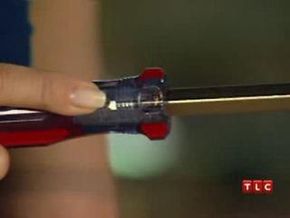Screws come in an array of head styles, each tailored to specific needs and applications. Among these, flat and oval heads stand out for their versatility and functionality. While flat head screws are prized for their ability to lie flush with the surface, oval head screws combine the benefits of flat heads with a slightly rounded top, providing a more decorative finish.
Another key player in this lineup is the trim head screw, a variant that offers a smaller head size, making it less conspicuous in projects where aesthetics are crucial. Meanwhile, the traditional slotted screws, with their simple yet effective design, remain a staple in many basic applications.
Understanding these common screw head types is essential for anyone delving into the world of DIY projects, carpentry, or construction. So, let's dive into the most frequently used screw head types!
Flat Head Screws: The Classics
The flat head screw, characterized by its flat top and conical shape, is one of the most common types. Ideal for applications where the screw needs to sit flush against the surface, they are often used in woodworking and cabinetry. The design allows for a tighter fit and a more aesthetic finish.
Phillips Head Screws: The Cross-Shaped Convenience
Phillips head screws, easily identifiable by their cross-shaped slot, offer a better grip for the screwdriver, reducing the chance of 'cam-out' (slipping). This design allows for higher torque to be applied, making them suitable for a wide range of applications, from electronics to construction.
Torx Head Screws: The Star Performers
Torx, or star head screws, are distinguished by their six-pointed star-shaped slot. This unique design provides an even distribution of force, reducing wear and tear. Torx screws are favored in automotive and electronic industries for their ability to withstand high torques and provide secure fastening.
Hex Cap Screws: The Wrench-Friendly Option
Hex head screws, known for their hexagonal shape, are designed to be driven by a wrench or a socket. This makes them ideal for situations where a screwdriver can't provide enough torque. Commonly used in machinery and large-scale construction, these screws offer robust fastening capabilities.
Robertson Head Screws: The Square Deal
Originating from Canada, the Robertson, or square head screws, feature a square-shaped indentation. This design allows for a higher torque without stripping the head, making them a popular choice in woodworking and decking. They provide a stable drive and are less prone to cam-out compared to other types.
Pozidriv Head Screws: Enhanced Grip for Precision Work
Pozidriv head screws, an evolution of the Phillips design, feature additional lines at 45 degrees to the main cross. This configuration significantly increases the contact area between the screwdriver and the screw, leading to a more secure fit.
This design minimizes slipping and allows for more precise torque control, making Pozidriv screws a preferred choice in precision assembly work, especially in European markets where their usage is more prevalent.
Slotted Head Screws: The Timeless Simplicity
The slotted screw, a classic in the fastener head family, features a single straight cut across its head. This timeless design, originating from the early days of screw manufacturing, continues to be a popular choice due to its straightforward interaction with standard flathead screwdrivers.
While slotted fastener heads are more susceptible to cam-out compared to more contemporary designs, their ease of use and simplicity make them a go-to choice in applications where extreme torque is not a primary concern. Their universal appeal lies in the fact that they can be easily installed and removed with common tools.
Security Head Screws: Safeguarding Against Tampering
Security head screws are innovatively designed to prevent unauthorized removal, making them ideal for public or high-security installations. These screws come in various designs, including Torx with a pin or one-way slotted heads, requiring special tools for installation and removal. This feature is crucial for ensuring safety and security in sensitive environments, such as public facilities, electronic devices, and areas prone to vandalism.
Spanner Head Screws: The Dual-Hole Defense
Spanner head screws, also known as "snake eyes" or "pig nose" screws, feature two small, round holes on the head, requiring a specialized spanner bit for manipulation. This unique design adds an extra layer of security, making these screws a popular choice for environments where tampering or unauthorized access is a concern. Commonly found in public restrooms, transit systems, and children's playground equipment, spanner screws provide both security and safety.
Tri-Wing Head Screws: The Aerospace Favorite
Tri-Wing head screws, recognized by their triangular slotted design, are engineered for applications where a secure fit and high torque resistance are paramount. They are especially favored in the aerospace industry and electronic manufacturing due to their resistance to cam-out and the ability to withstand vibrations without loosening. The unique design also adds a level of security, as they require a specific type of screwdriver.
Allen Head Screws (or Socket Head Cap Screws)
Allen head screws, or socket cap heads, are identified by their hexagonal recess, which is compatible with an Allen key, hex key, or Allen wrench. This design allows for a much tighter fit and higher torque application, making these screws a staple in machinery and precision engineering.
Socket head cap screws are particularly favored in assembling bikes and engine parts, where a secure and tight fastening is crucial. The internal hex design also means the screw head can be lower profile, which is beneficial in applications where space is limited or a flush surface is needed.
